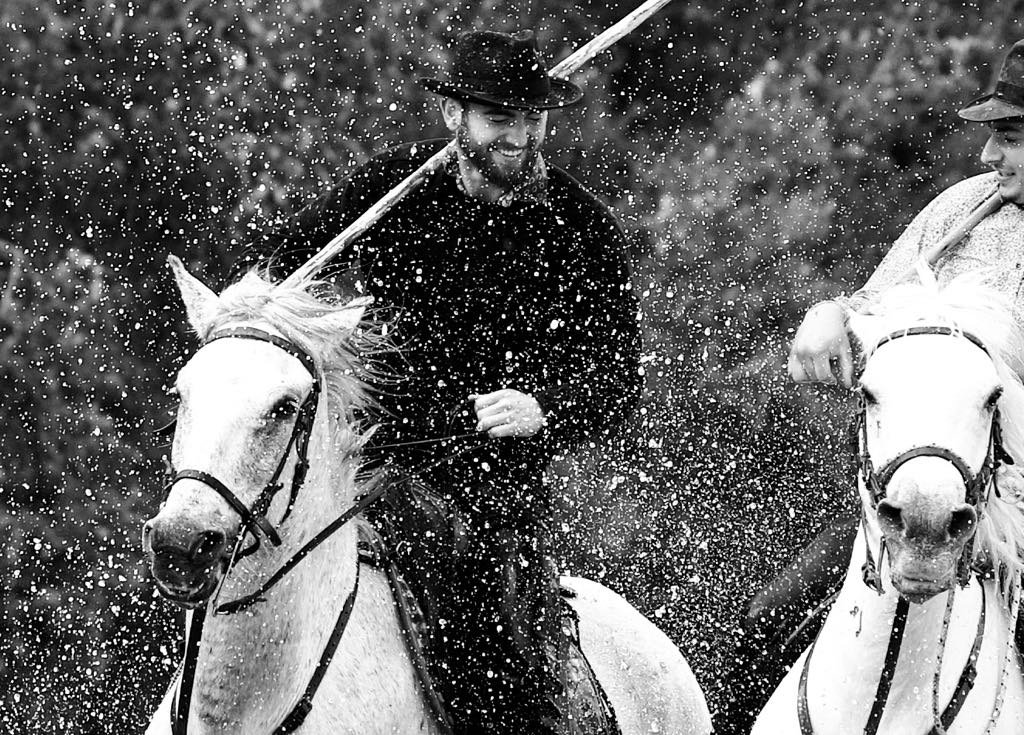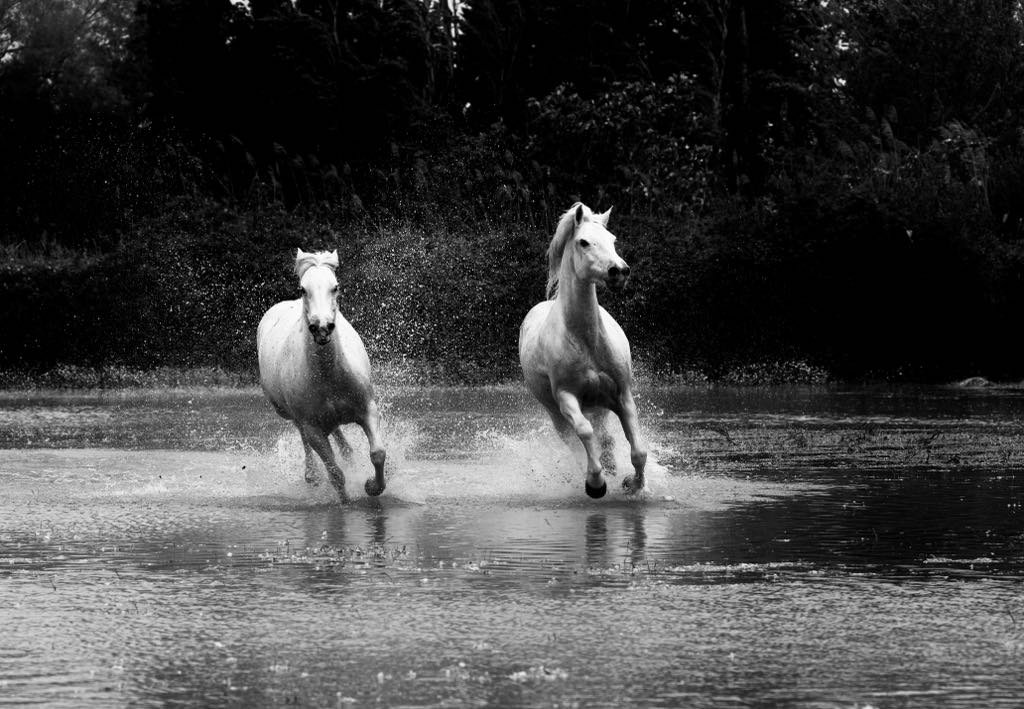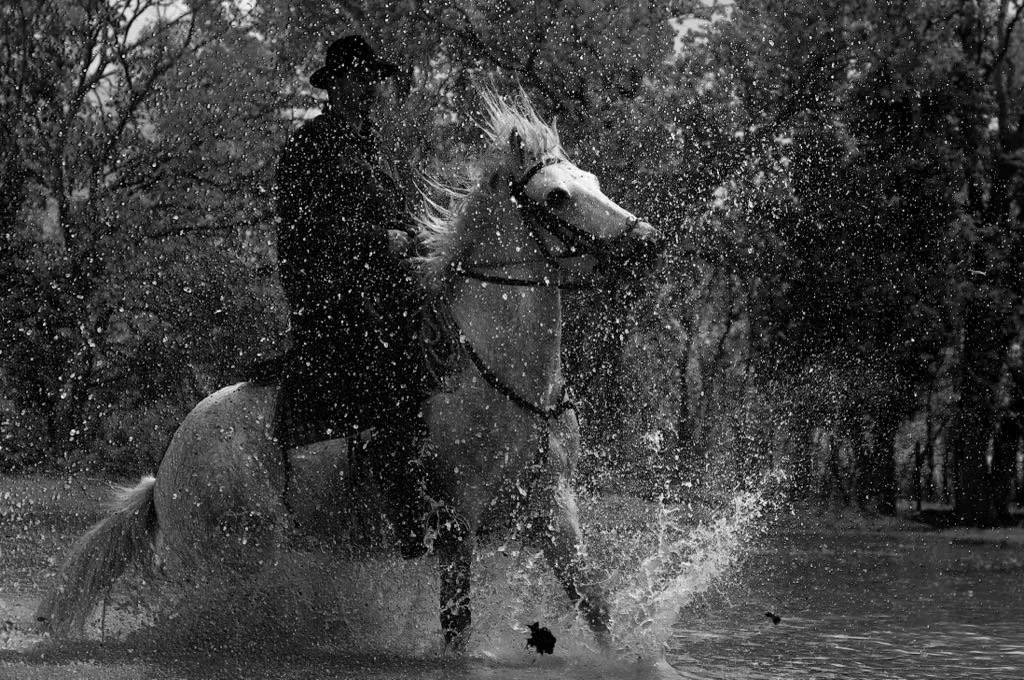Camargue
by Myriam Aadli
In the spring, I traveled to the Camargue, a beautiful region often overlooked by tourists. Accompanied by my friend Olivier, who is familiar with the local families, I had the opportunity to observe the people who are typically difficult to approach. I visited a farm where the guardians and Arlésiennes work diligently to preserve their traditions.
The Camargue is a marshy area that spans 150,000 hectares, formed by the Rhône delta and the Mediterranean Sea. It is the second-largest delta in the Mediterranean and, like all deltas, has a triangular shape, with its corners at Grau du Roi, Arles, and Fos-sur-Mer.
This natural region in France is situated by the Mediterranean Sea, within the departments of Gard and Bouches-du-Rhône. Animal and plant life, especially the flamingo—the emblem of the Camargue—are strictly protected.
**The Three Symbols of the Camargue**
- **Water:** a marine anchor representing hope
- **Earth:** a heart symbolizing charity
- **Sky:** tridents representing faith
The first costume festival was held in Saintes-Maries-de-la-Mer in 1904. Frédéric Mistral and Baroncelli collaborated to organize the "Festo Vierginenco" at the ancient theatre of Arles. This festival aimed to celebrate the regional women's costumes, which had been neglected over time.
On June 24, 1904, at the Mas de l’Amarée, the Marquis and his friends established the "Comité Virginien," allowing guardians on horseback to escort young girls in traditional costumes to the festival and other southern celebrations. This revived the ancient southern chivalry that had fought for the honour and glory of the Midi.
In 1905, a significant event unfolded in the life of Folco de Baroncelli, a horseman who sought to connect with Native Americans of Buffalo Bill’s Wild West. His most notable encounters occurred during the European tour in 1905 and 1906. Joë Hamman, whom he met during this Paris event, assisted him in his efforts. As the Marquis approached his forties, his face showed the wear from a harsh climate, and he began to resemble an authentic Native American while donning the costume of his friend Jacob, complete with feathers and moccasins.
**"A Language, A People, An Ideal"**
The "Nacioun Gardiano" also exists to promote Camargue heritage, folklore, and preserve traditions. The Marquis mandated that all guardians wear traditional costumes (a black velvet jacket, mole-skin trousers, checkered shirt, and wide-brimmed hat) while riding the Camargue horse.
The Camargue horse is an essential symbol of the region, gaining international fame through the film "Crin Blanc," where its striking white coat captured attention. Today, these horses are sold worldwide. The guardian is responsible for a manade, a herd of bulls or horses raised in semi-freedom and owned by a manadier, while also acting as an agricultural worker much like the herdsmen of 19th-century France.
**How to Become an Arlésienne**
To become an Arlésienne, one must reside in Arles or the Pays d'Arles, be between 18 and 24 years old on election day, remain single during their reign, and have long enough hair to wear the traditional headdresses.
In Arles, guardians, Arlésiennes, and bulls play central roles in all traditional festivals that mark the seasons of the Pays d’Arles. The Arlésienne traditions, deeply rooted in Provençal history, celebrate the bravery of the guardians, the elegance of the Arlésiennes, and the strength of the bulls. Throughout the year, traditional festivals and Camargue bullfighting are a regular part of life in these sun-drenched lands. The Arlésiennes embody the spirit of Provençal culture.
From a young age, girls wear traditional attire and dream of becoming the Queen of Arles one day. In this region, traditional festivals represent more than just folklore; they reflect a deep connection to Provençal identity.
Each manade has a motto represented by specific colours: violet, white, and green. Often displayed as a rosette, these colours are placed on a bull’s withers during its appearance in prestigious bullfights. I was fortunate to meet these authentic individuals, who shared some of their ancestral secrets with me.
The local community’s mysterious history is well-preserved, safeguarded by the hands and voices of the elder generations. In this unique cultural landscape, there exists a notion of hierarchical freedom. I plan to return to this subject to share some hidden secrets that are meant to be revealed.
The video will not be visible in some countries due to copyright issues.
Thanks Olivier







































